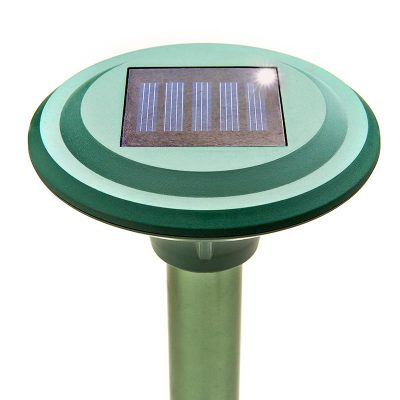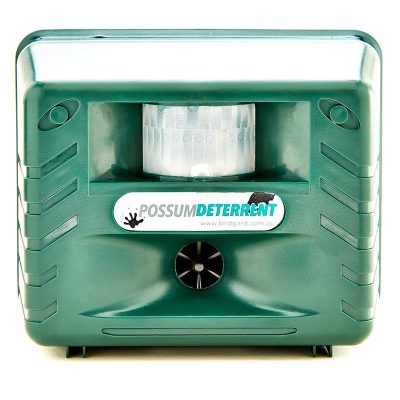The blackbird was introduced from Europe in 1863. Currently found in south east Australia from the Eyre Peninsular in the west through to the Pacific coast of NSW. It ranges north to central NSW. It is also common throughout Tasmania. It is a fine singer. It’s diet includes almost anything from insects, spiders, molluscs, worms to seed, fruits and berries. It’s flight is fast and has a curious flickering of the wings. When it lands it moves it’s tail up and down. It breeds from September to January and lays 3 to 5 eggs, usually 4. It’s usually seen foraging on the ground, common in parks and gardens in the cities.
The blackbird, particularly in Tasmania, has become a pest in vineyards and orchards. They love grapes and cherries. Because of their ground hugging habits, they can be harder than many other species to repel. Often it is necessary to have two sonic fences protecting the crop’s boundaries – one up at the top of the canopy and another down low just above ground level to prevent the birds hopping along the ground and getting in under the sound up overhead.
Often when the local conditions and environment suits blackbirds there is also a silver-eye problem. Fortunately an installation to repel silver-eyes is usually adequate for blackbirds, although it may have to be beefed up to provide extra sound intensity, particularly near the ground.
Which pest do you want to repel?
12V Battery 28 Parrots 28s Airside Safety Application Animals Bandicoots Bats Bird Deterrent Bird Repeller Birds Bird Scarer Blackbirds Black ducks Blue Faced Honey Eaters Brown Snakes Brush Turkeys Bush Turkeys Cockatoos Cockroaches Corellas Cormorants Crawling Insects Crows Currawongs Doves Ducks Finches Fleas Flying Fox Flying Foxes Flying Insects Friar Birds Galahs Grass Parrots Herons Ibis Indian Mynas Kangaroo Kangaroos Leatherheads Little Corellas Lorikeets Magpie Geese Mice Micro Bats Mudlarks Musk Lorikeets Noisy Minors Parrots Peewees Pelicans Pigeon Deterrent Pigeon Repeller Pigeons Pigeon Scarer Plovers Port Lincoln Parrots Port Lincolns Possum Repeller Possums Rabbits Rainbow Lorikeets Rats Red-Bellied Black Snake Red Wattlebirds Red Wattle Birds Rodent Repeller Rodents Rosellas Scaly Breasted Lorikeets Scary Eye Balloon Seagull and Duck Scarer Seagulls Sea Gulls Silver-Eyes Silvereyes Solar Solar Powered Solar Powered Possum Repeller Sparrows Spiders Starlings Swallows Swamp Hens Taipans Terns Ticks Tiger Snakes Timer Ultrasonic Ultrasonic Possum Repeller Ultrasonic sounds Visual Bird scarer Wallabies Wallaroos Wattlebirds Wax-Eyes White-Eyes Wildlife Hazard Management WombatsProduct categories
Recent reviews
-
 Snake Repeller by Chris C
Snake Repeller by Chris C -
 Solar Powered Possum Repeller by Rob
Solar Powered Possum Repeller by Rob -
 Swallow Repeller by Maree
Swallow Repeller by Maree -
 Possum Deterrent by Nerrida Nixon
Possum Deterrent by Nerrida Nixon -
 Possum Deterrent by Gary
Possum Deterrent by Gary
-





Barbra
it may sound crazy, but Blackbirds use an aggressive snapping sound when they feel threatened and need to chase off a threat or rival, so some sort of device that makes a snapping noise would potentially help them think they’re under attack and stay away as they’ll think the territory has been claimed
Darren
Hi Barbra
We have a device we call the CEX on our website, it has a long history of repelling blackbirds
It is always best to call us before any purchase 0754436344
Regards Bird Gard
Alex
I have black birds nesting in my roof. I keep trying to block up holes but they keep finding a way. Pain in the ass.
Darren
Hi Alex
Is it blackbirds or starlings ? we use products such as the eagle kite and the starling repeller. Always best to have a chat before buying something.
Regards Bird Gard
Amanda
This black Bird is ruining my life it never shuts the f up. I need it gone.
Darren
Hi Amanda
Google Common Koel call, is this the bird ?
If so we might be able to help if the bird is in a tree on your land
But if not, sorry we cant help you.
Regards
Bird Gard
Tammy
Is there a home made deterrent for this pesky bird it is ripping up my garden
Bird Gard
Hi Tammy
Sorry we don’t know of any home made deterrent for blackbirds.
We normally use our CEX device or the Bird Gard Kite to repel these birds.
The Holographic tape might also be an option.